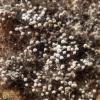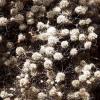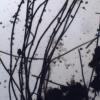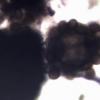
20-08-2015 01:36
Lepista ZacariasHello everybody.This one was growing in a piece of

21-08-2015 07:30
Dave WasilewskiThere is a diversity of species of small yellow cu

21-08-2015 08:19
a ver que os pareceEsporas de 14,2-15 x 4,4-4,6M=

20-08-2015 01:29
This Scutellinia seems to fit well with S superba

14-08-2015 00:00
Lepista ZacariasDear all,I would like to classify the ascomycete g

19-08-2015 22:09
Bonsoir, Je recherche la description de ce champi

20-08-2015 12:05
 Blasco Rafael
Blasco Rafael
Hola, tengo esta muestra recogida a 2150m, pradera

19-08-2015 12:13
brigitte capoenBonjour , Je suis à la recherche des deux publica
Hello everybody.
This one was growing in a piece of wood inside a garage.
It has very long hairs. I found no asci and instead it seems to have some conidiospores. The spores are simple, ellipsoidal to subglobose, seeming guttullate, brown with the following dimensions:
(10.4) 11.4 - 14.2 (14.7) x (8) 8.6 - 10.4 (10.7) um
Q = (1) 1.1 - 1.5 ; N = 20; Me = 13 x 9.5 um ; Qe = 1.4.
Any help for its classification will be welcome.
thanks in advance,
zaca

Maybe even not. Could be a Chaetomium, the asci are used to disintegrate early.
Regards from Lothar

Michel.
Any special suggestion towards identification?
Regards,
zaca

Michel.
My question was precisely what details are needed to arrive to a positive identification.
Thanks,
zaca

Michel.






